New Balance FuelCell RC Elite Racing Shoe Review
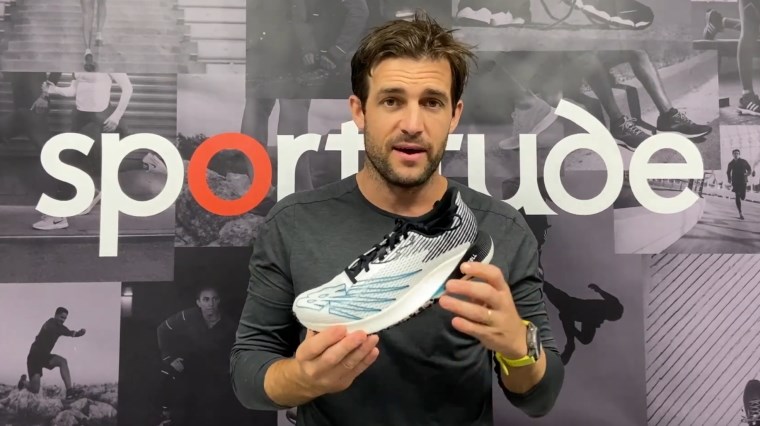
Josh reviews the carbon-plated New Balance FuelCell RC Elite running shoes to meet the demands of elite athletes competing in half marathon up to full marathon distances. Being a cutting-edge race day shoe, New Balance have prioritised lightweight engineering and speed, keeping it free of support technologies that are reserved for high mileage running shoes or your daily trainers.
The Dynaride outsole weighs in lighter than a traditional blown rubber outsole yet provides competition-ready traction. It caters primarily to midfoot and forefoot strikers, runners capable of achieving a higher cadence or speed.
The stack height is spot-on to accommodate the super soft yet responsive FuelCell cushioning – soaking up shock during race day miles without sacrificing the explosive feel. Offering a stiffer forefoot construction, the full-length carbon plate provides a propulsive toe-off and improved gait efficiency.
With an ultra-lightweight upper featuring breathable engineered mesh, thin tongue and minimalistic heel counter for a touch more structure, it wraps your feet in race-worthy comfort and speed.
Check out the review with full transcript below.
Hey guys, Josh here from Sportitude Running and it's shoe review time. We're going to review the New Balance FuelCell RC Elite. This shoe has had quite the hype over the last 12 months and some of you might say we're a bit late to the party with reviewing this shoe. Yes, it's true there is the version 2 coming out soon however we'll do a comparative across the two shoes.
The reason I'm doing a review is because version 2 which is coming is considerably different from the version 1. Like all my reviews we'll be breaking down this shoe from the outsole, midsole and the upper.
We’ll profile the runner that could be considering this race day shoe and give you all the information at home to maybe throw this into your race day rotation. Without further ado let's get stuck in.
Runner Profile
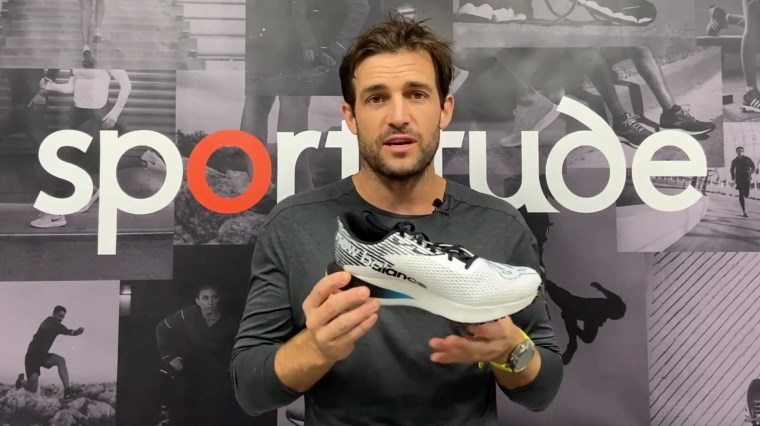
When we're talking about a race day shoe of course it’s not going to be for your daily training and you’re not going to be using it for your long miles.
You might throw it in for a couple of tempo runs pre-race day to get yourself familiar with the fit, feel and function of this shoe. Being a race day shoe we're going to expect it to be lighter, more responsive and we throw support out the window just a little bit because you're not going to be using it for most of your runs.
It is built on a neutral platform but that's what you're going to expect from a race day shoe. However, it does increase that velocity of movement through your transition. That's purely done from both the midsole and the carbon plate which we'll get into with today's review. You can expect a little bit of extra movement through your gait cycle running at a higher speed or higher cadence and a quicker pace.
Outsole
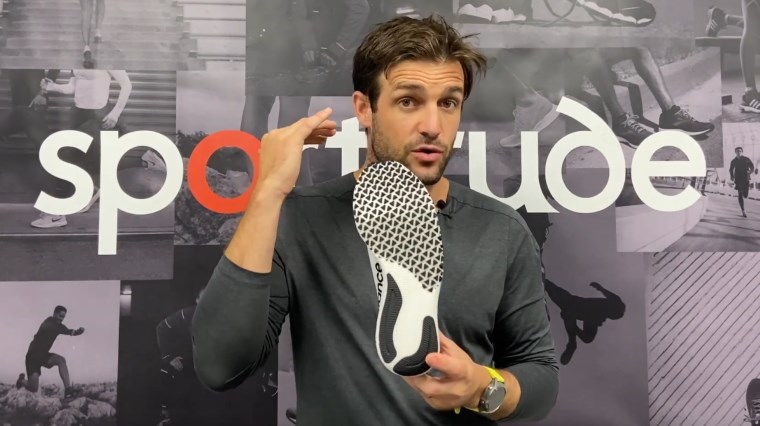
Jumping to the outsole straight away you can see there's a different compound or different execution of outsole through the forefoot. New Balance have created a Dynaride outsole. In comparison to a traditional blown rubber it's a lot lighter but incredibly grippy.
You still have to protect the asset which is the FuelCell midsole, so you have to make it as durable as you possibly can for a race day shoe. New Balance have executed this outsole through the forefoot so for the majority of runners who'll be using this we’d expect more of a midfoot to maybe forefoot landing pattern for that higher cadence or speed type of runner.
There is at the element which will cater for a heel striker with the harder wearing rubber at the back. However, you will see majority of runners who should be considering this shoe to potentially be more of that midfoot to forefoot strike pattern.
I want to point out a couple of features with the outsole. It might be hard to tell but it does flare out quite a bit on that lateral side which is different to its competitors. New Balance have identified that by offering a little bit more midsole and you can see how it kicks out to that lateral column, you're providing a little bit more of a cushioned landing pad. That will naturally speed up your transition through midstance or toe-off.
By executing that engineering set-up on the lateral side it provides a little bit more range of movement through your ankle. However, the trade-off is that you can transition through your gait a little bit quicker.
There is a method to the madness. In comparison to the Saucony Endorphin Pro, Nike ZoomX Vaporfly Next% 2 and Brooks Hyperion Elite 2 just to name a few, there is a quite a difference regarding the feel under your foot when you land and then transition through your gait.
Midsole
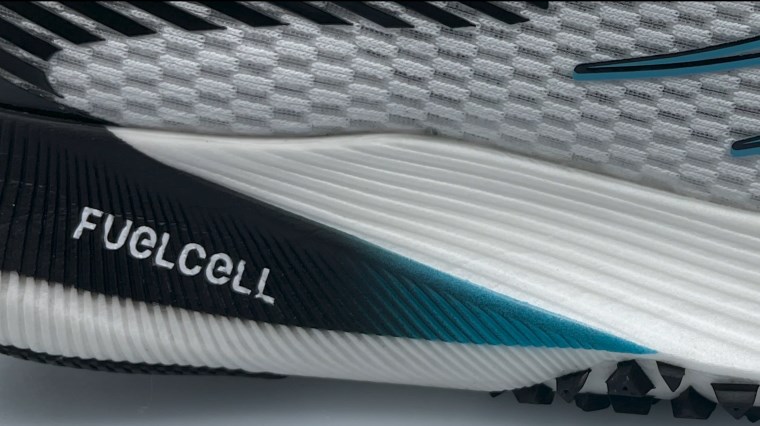
Jumping into the midsole we have is a stack height of 35mm in the heel and 25mm in the forefoot for a 10mm heel-to-toe drop. We have the full-length carbon plate that runs from the heel right through to the end of your forefoot.
It's about the right stack height for the cushioning system. The FuelCell cushioning is incredibly soft underneath the foot. There is no denying that when you put it on, stand in it and once you start running you get the perfect mixture of absorption and that response and release which is what you want in a race day shoe.
I believe if New Balance went marginally higher, you'd probably get a little bit of instability with this density of foam. On the flip side if you went too low, you'd lose that element of cushioning and explosiveness out of your gait cycle. I believe that the heel-to-toe drop in conjunction this carbon plate is absolutely on point.
Not a lot of you may know this but with full-length carbon plates we tend to find that because they’re relatively stiff through the forefoot, when runners are transitioning through mid-stance or toe-off they almost re-supinate out of the gait cycle. It doesn't really matter what model it's in.
The carbon plate is there to help with propulsion; however we're not seeing too many runners that are favouring the medial side with a carbon-plated shoe. It’s because they're using their big toe like a lever, engaging and then propelling out of their gait cycle.
Upper
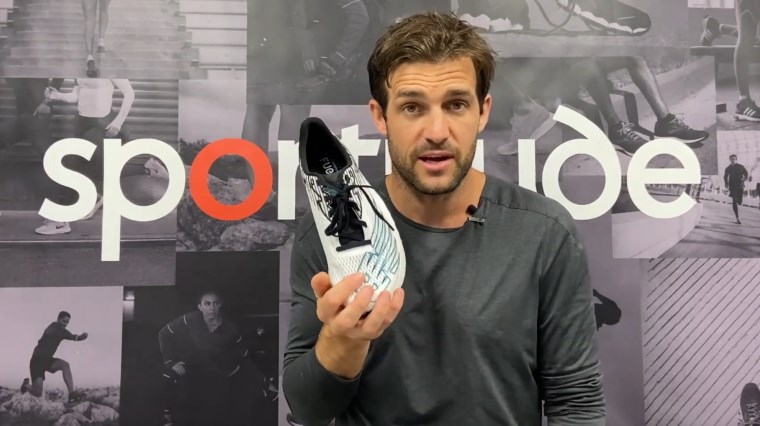
Moving on to the upper, keeping in mind being a race day shoe it’s incredibly light. There is a lot of breathability up top and a minimalistic take on what I would classify as a heel counter. There's a little bit of structure and integrity back there and there needs to be because it is a relatively soft shoe underneath the foot. You need to have some form of stability up top to keep your foot on the platform.
Coming through to the midsection the tongue is very thin. That's going to reduce the weight and provide extra ventilation. There's no gusseted tongue system, it's glued down the bottom of the lacing structure and it stays relatively stable. With some shoes you find they gusset the tongue in, so it doesn't move around too much but I didn't have any issues with this shoe on my quicker runs. It felt nice and stable up top.
As we touched on, being a very light and breathable shoe the engineered mesh through the forefoot is about perfect in my opinion regarding the fit, feel, function and breathability.
The Wrap Up
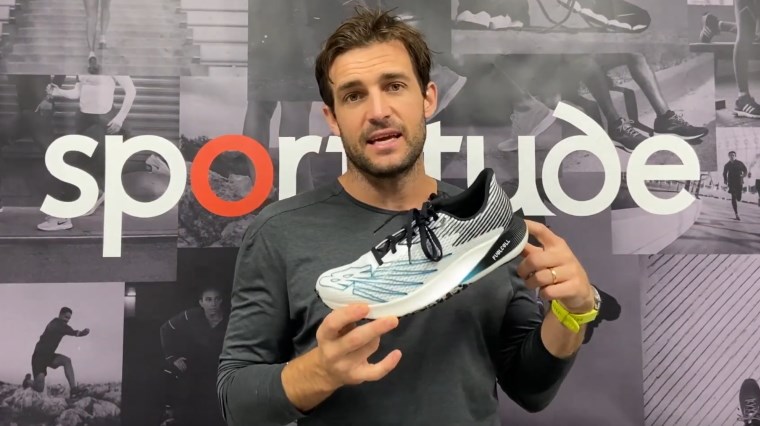
That's my wrap on the New Balance FuelCell RC Elite. It features a 10mm heel-to-toe drop, full-length carbon plate and is on the FuelCell midsole which is very light and comfortable. It’s certainly one to consider for chasing PBs and if you’re looking for a race day shoe.
Please subscribe to the Sportitude YouTube channel if you haven’t doesn’t so already. If you have any questions on this shoe, please contact our Sportitude shoe experts. If you have any comments, queries or concerns about the carbon plate offering let us know and we'll get back to you as soon as possible.
Until next time stay safe, happy running, be kind to each other and we’ll see you on the road. Take care.
FEATURES
- Support: Neutral
- Upper: Mesh
- Midsole: New Balance FuelCell
- Heel Height: 35mm
- Forefoot Height: 25mm
- Offset / Drop: 10mm
Men
- Weight: 205g / 7.2oz
- Width: D (standard)
Women
- Weight: 175g / 6.2oz
- Width: B (standard)
